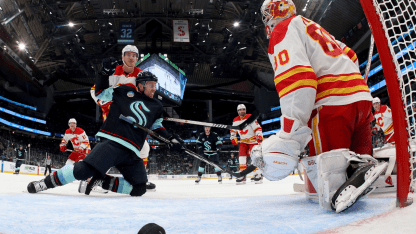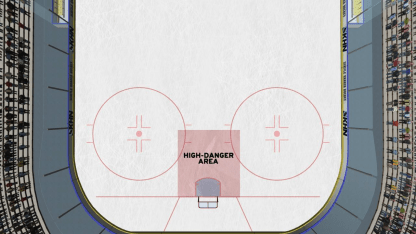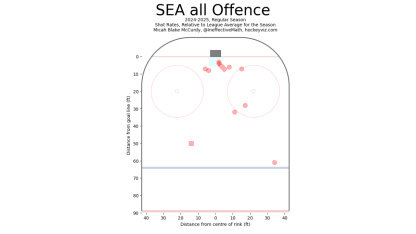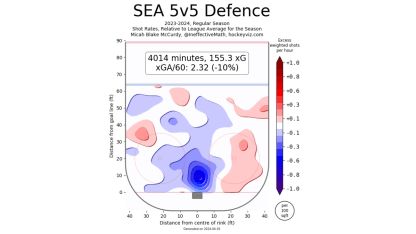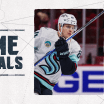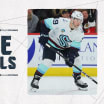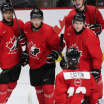It would make sense that the closer you are to the goal the better chance you have of scoring, but what exactly is the challenge to a goaltender? We asked Philipp Grubauer that very question.
“The closer the shot is, the less time you have to react. It’s a difficult challenge - the tighter (the shot) is, the closer it is, you have to be in position. If you go deeper in your net, the more net you give up (to the shooter). And the more aggressive you are, the more vulnerable you are to if (the shooter) doesn't shoot and passes it back door, then you have a longer distance for you to make up (to address) that second chance.”
It's not just about the shot either. One body coming net front means multiple bodies potentially coming net front which makes it more challenging for a goaltender to track the puck. One shot in close could also be followed by a couple more whacks from sticks to try to knock the puck in.
“That's not ideal because I want to take the sticks and the rebounds away,” Grubauer said. “You always want to control the rebounds, but sometimes they're too close there's no chance. (Shots from net front) are pretty tough to stop in this league.”
Grubauer’s not wrong, according to NHL Edge data last year, 27.2-percent of all shots taken and 48.1-percent of all goals came from right in front of the crease.
It’s obviously advantageous to get net front, so how do you do it? It turns out every player has their own methodology.
Jaden Schwartz has been one of the more effective Kraken skaters in terms of getting net front for a tip, shot, or screen. He says coaches have always told him that getting to that part of the ice was key to being an effective player in the NHL.
“It is tough to get net front,” Schwartz said. “Obviously, other teams’ ‘D’ are trying to box you out and certain plays are different. Sometimes you have to take a different route to get (net front) and fight through bodies and the puck has to come to the net, too.”
It’s not just about moving your body to a spot on the ice, skaters who are trying to get net front have to balance mindset with opportunity and timing often in a split second. It has to become instinctive.
“You go around the net or find different ways of twisting and turning,” Schwartz said. “(To get) in front of the net, you're not really thinking. It's more of just reading and reacting. Every play is a little bit different, and you just learn as you go.”

